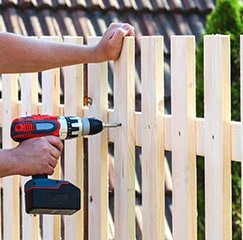Our team of cattle panel fence installers can help you make decisions about the materials that will be most appropriate for your property. We’re able to come up with custom designs and solutions for your specific property. From a farm fence that keeps cattle from straying to a ranch fence that establishes a property line, we’ve got the expertise to get it done.
Steel Cattle Panel Fences
Steel cattle panel fences are ideal, as they can withstand the Austin weather for the long term. They have a sturdier design thanks to the wood framing. Wire mesh is stretched over the frame to create the panel. When the fence is lower it is sometimes called hog panels rather than cattle panels.
For this type of fence galvanized steel should be used. Galvanized steel has been treated with a zinc coating that makes it more resistant to rust.
Depending on how the steel is treated, it should be protected from rusting for up to 100 years.
Our team of cattle panel fence installers can help you make decisions about the materials that will be most appropriate for your property. Often the decision comes down to the length of fencing and animals that are being fenced in.
Barbed Wire Fencing
Another option is barbed wire. This is a traditional style ranch fence that features sharp prongs that can entangle as well as cut. Barbed wire is an affordable material, but installation requires great care.
Woven Wire Fencing
A woven wire fence uses the same material as barbed wire, but the design is completely different. Instead of sharp barbs that can poke cattle and horses, a woven wire fence has a wire mesh design that keeps livestock safely contained. However, it is more expensive to install compared to other wire fencing.
Electric Fencing
Some livestock owners want maximum security and protection, primarily from other wildlife. In these instances, electric fencing may be worth considering. However, the installation is much more involved due to the need for electricity.









